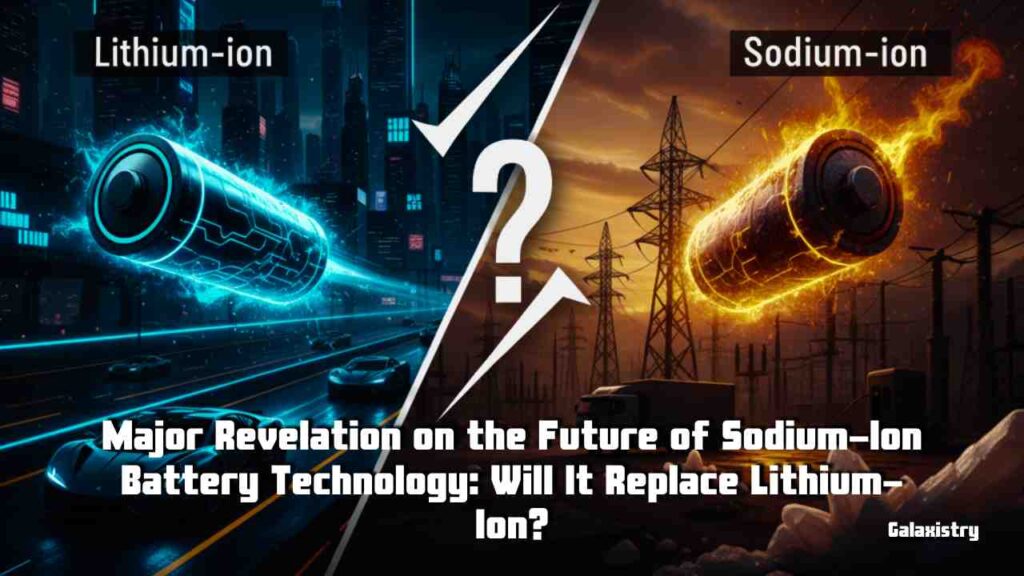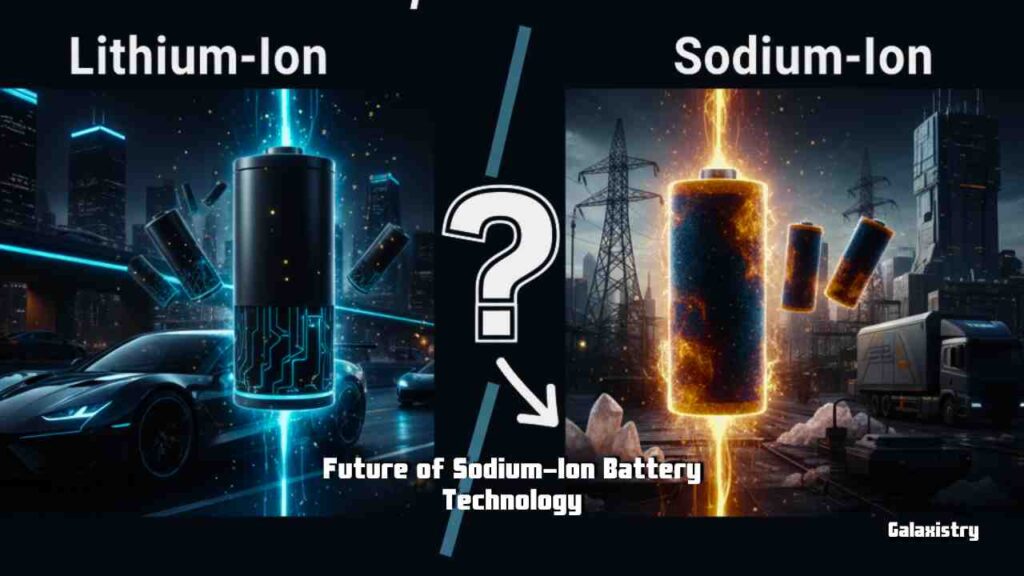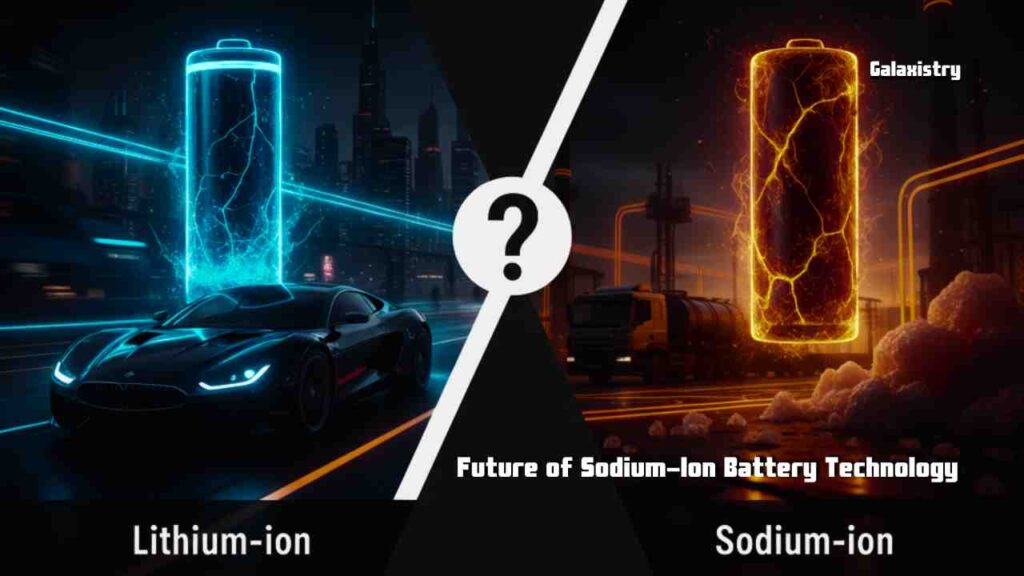Future of Sodium-Ion Battery Technology: Whenever we talk about Electric Vehicles (EVs) or Smartphones, one name immediately comes to mind and that is Lithium-ion. This technology has been powering our lives for decades. But lithium is a limited resource, expensive and its mining is also environmentally concerning. But what if we told you that a cheaper, safer and more durable alternative is rapidly emerging?
Yes! We are talking about Sodium-ion batteries. And in the past few days, news from the world of Research and Development (R&D) has doubled the excitement about the future of sodium-ion battery technology.

What are Sodium-Ion Batteries and Why Are They Important?
Sodium-ion (Na-ion) batteries work just like lithium-ion batteries but they use sodium instead of lithium to store charge. Sodium, which is common table salt, is abundantly available on Earth.
Key Advantages:
- Low Cost: Sodium is thousands of times more abundant and cheaper than lithium.
- Safety: These batteries are less flammable and can better withstand large temperature fluctuations.
- Eco-Friendly: Their production does not require expensive and controversial materials like cobalt or nickel.
However one problem remained: until now the energy density of sodium-ion batteries (how much energy can be stored in a small size) was lower compared to lithium-ion.
Latest R&D (Last Few Days): What is This New Breakthrough?

Here’s where the real innovation happened! According to the latest news, researchers at the University of Surrey have achieved a surprising breakthrough in the cathode material of sodium-ion batteries.
They discovered that water, which is usually considered an enemy during battery production and completely removed, can actually enhance performance!
How Does This ‘Wet’ Innovation Work?
Researchers used a cathode material called nanostructured sodium vanadate hydrate (NVOH). They found that when water molecules are allowed to remain “trapped” in the structure of this material, it performs several magical functions:
- Charge Storage: This “hydrated” material was able to store nearly double the charge compared to the dry material! This is a major solution to the energy density problem.
- Fast Charging: These water molecules act like a “lubricant” for sodium ions, allowing them to move in and out of the cathode much faster. This increases the battery’s charging speed.
- Stability: This “wet” structure remained stable even after more than 400 charging cycles which is excellent for the battery life cycle.
The Most Surprising Bonus: It Can Purify Seawater!
Yes, you read that right. When the team tested this battery in saltwater as an electrolyte, it not only worked as a battery but also successfully removed salt ions from the water!
This could be a dual-purpose technology: energy storage and desalination, which could be a boon for countries like India.
What is the Real Potential of Sodium-Ion Battery Technology?

This new R&D is a game-changer. However, the future of sodium-ion battery technology may not immediately replace your high-end smartphone or luxury EV (where every gram of weight matters).
But its real market is much bigger:
- Grid-Scale Energy Storage: To store electricity generated from solar and wind farms, where low cost and safety are more important than energy density.
- Budget EVs and E-Scooters: Affordable and safe electric vehicles for markets like India.
- Home Inverters: A cheaper and safer option for home battery systems.
The future of sodium-ion battery technology is no longer just a theory; it is very close to becoming a reality. This innovation could reduce our dependence on lithium and help create a more sustainable future.
What do you think about this new battery technology? Do you think this technology will be a boon for electric products? Would you prefer to use a sodium-ion battery in your home or EV?